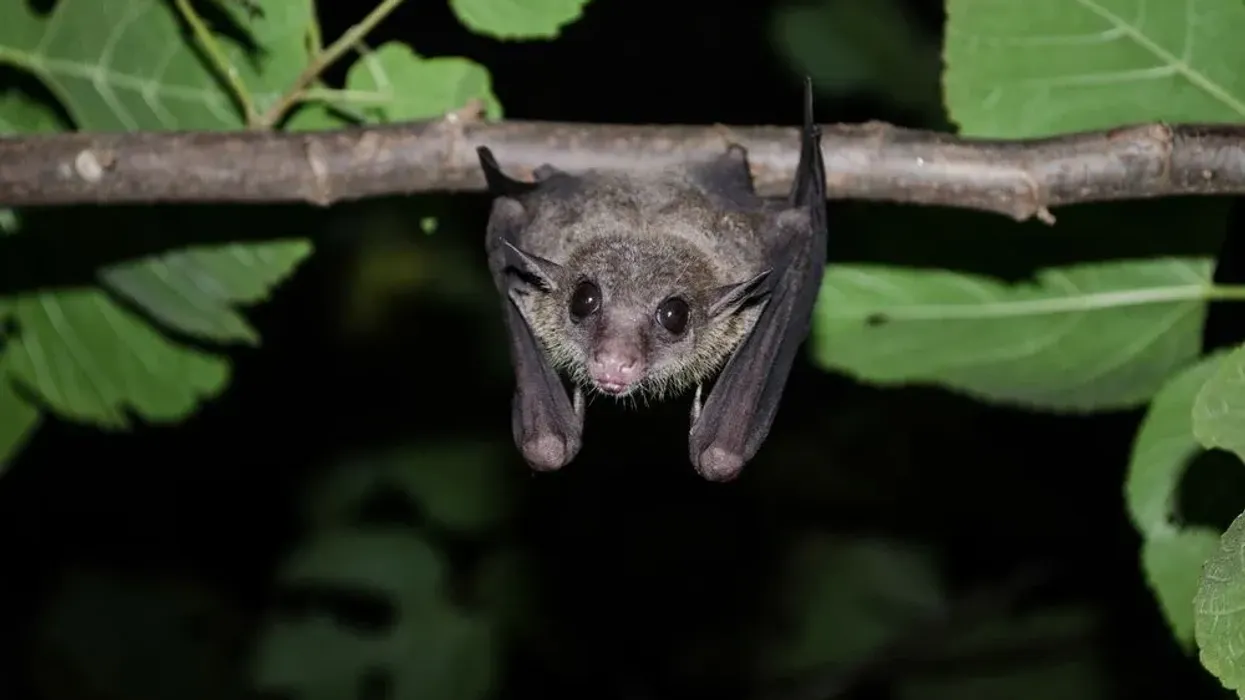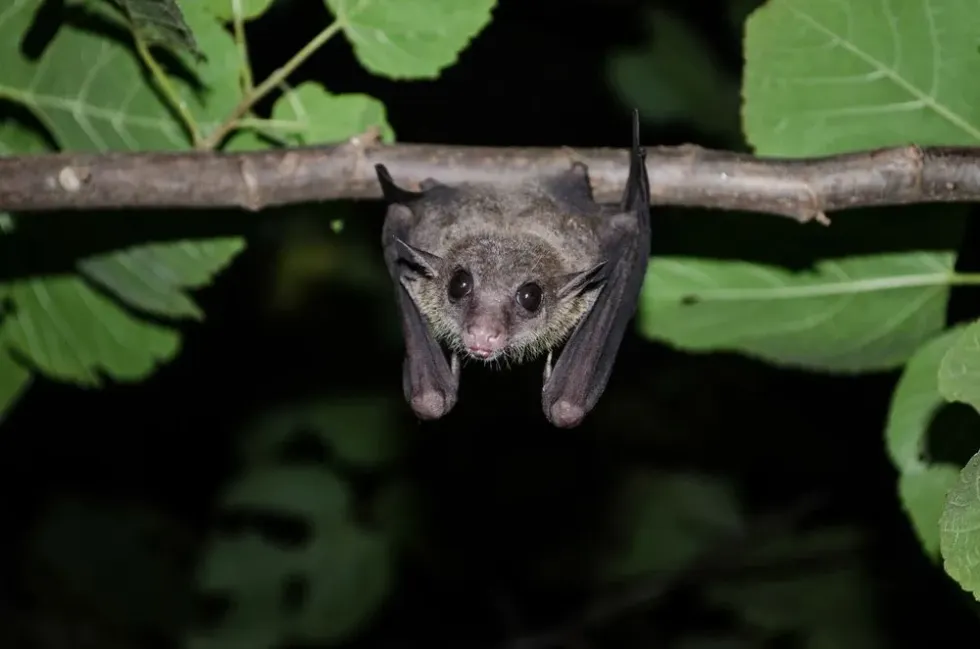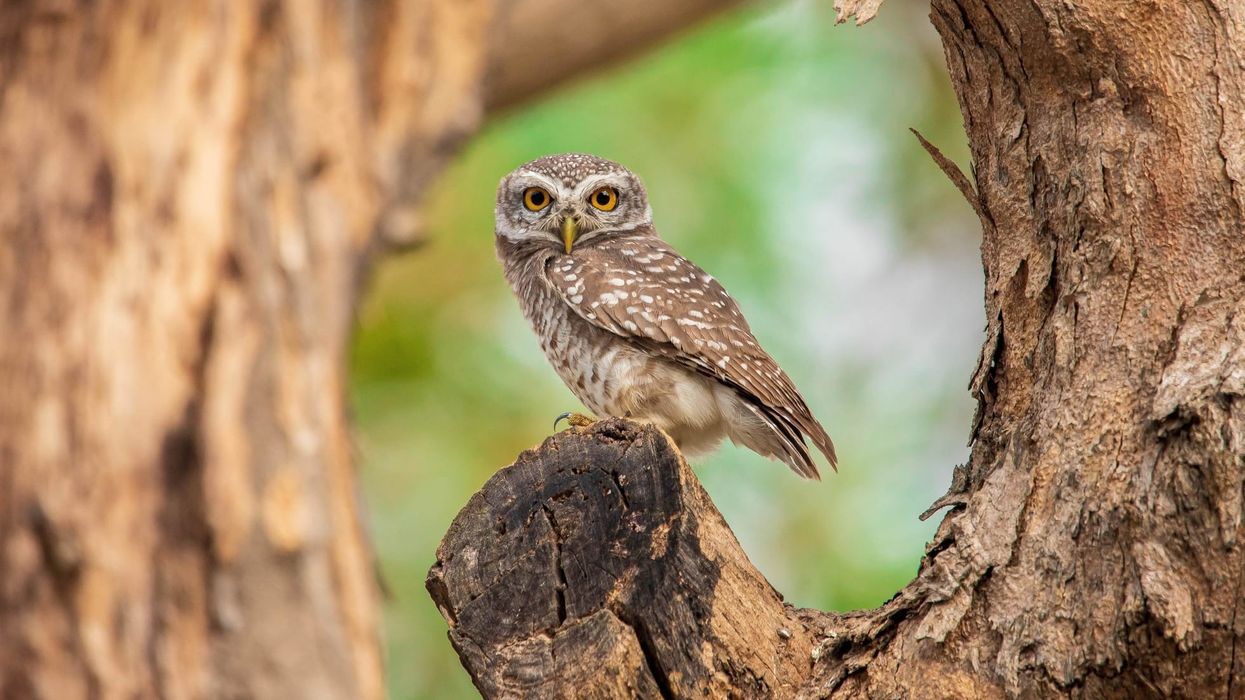A dawn bat (Eonycteris spelaea) is one of the many species of Old World fruit bats that are found commonly in Asia. They are popularly known by many common names like the cave nectar bat, lesser dawn bat, common nectar bat, and common dawn bat.
In Southeast Asia, these bats cover a wide range extending from the Philippines, Myanmar, Singapore, East Malaysia, West Malaysia, Thailand, Cambodia, Laos, Vietnam, China, and India.
A group of these fruit bats roosts in closed caves or hollows of trees. They travel large distances from their caves at night in search of flowering plants.
The lesser dawn bat is located most commonly around the fruit and flowers of the durian plant. The ideal habitats of these bats are constantly disturbed by human modifications.
Apart from that, disturbances in limestone caves have become a widespread cause for decreasing numbers. However, a large tolerance level of these bats has played a significant role in maintaining a fairly heavy population yet throughout the range.
To know more about the dawn bat, keep on reading the amazing bat facts. For similar content, check out the whiskered bat and ghost bat facts too.
Dawn Bat Interesting Facts
What type of animal is a dawn bat?
A dawn bat is a type of bat. They are known by some common names like the cave nectar bat, lesser dawn bat, common nectar bat, and common dawn bat.
What class of animal does a dawn bat belong to?
The lesser dawn bat (Eonycteris spelaea) of the Chiroptera order and Pteropodidae family belong to the class of mammals or Mammalia, the common class for all warm-blooded animals.
How many dawn bats are there in the world?
Dawn bats are a fairly common animal found in the southern parts of Asia. The species is believed to have a large population since they are encountered frequently in their range.
Therefore, they have been given the status of Least Concern in the IUCN Red List. Unfortunately, its global population is following a declining trend.
Extensive disturbances in their colonies have decreased their numbers by several thousand throughout their range. The current status is not known yet but in many places where their distribution once ranged between 30,000-50,000 individuals has now dropped to less than 10,000 individuals.
Where does a dawn bat live?
The distribution of the species of lesser dawn bats is extended over a large range. The lesser dawn bat (Eonycteris spelaea) are found throughout the south and southeastern parts of Asia.
Their range includes almost all places between southern China to Indonesia, and southwest India to the Phillippines.
Scarce data about the distribution of the bat in south Asia has also been documented where they range from the northeastern states of India down to the southern coasts, the Andaman Islands, and the Nicobar Islands. In China, they occur in the southern region including Hainan, Yunan, and Guangxi provinces.
What is a dawn bat's habitat?
The lesser dawn bat (Eonycteris spelaea) can adapt to several types of habitats ranging from tropical and semi-tropical forests to man-made structures. They also prefer to roost in dark semi-urban places like the attics of village huts or the basement of buildings.
The lesser dawn bat has been found living in an agricultural habitat and cultivated land away from forests.
Who do dawn bats live with?
Lesser dawn bats (Eonycteris spelaea) are social animals and they roost in a group of several dozens of bats like all megabats. In the morning, they spend their entire day with the group hanging from the ceilings of limestone caves.
A group of bats shares the same cave. At night, they forage among forest trees and flowers individually. The IUCN classified them as Least Concern because of their large roosting group size.
How long does a dawn bat live?
Dawn bats can live for more than five years in the wild. In some captive fruit bat species, the lifespan is observed to be more than even 20 years. However, there is no information regarding the captive lifespan of a lesser dawn.
How do they reproduce?
Dawns bats are polygamous in nature and the male lesser dawn bat (Eonycteris spelaea) mates with several female bats based in a single season. Males select the females based on the superiority of genes and fitness indicated by the female's body size.
Competition within male bats rarely exists in this species since females of the lesser dawn bat family are generally submissive. Breeding takes place following the estrus cycle of a female.
In a lesser dawn bat, the female undergoes two estruses in a year. They are capable of producing a single offspring twice a year.
After mating, females give birth to a single baby per breeding season and two babies in a year. The gestation period lasts for three to four months in lesser dawn bats. The males are not involved in parental care and the young ones stay with their mother until they are weaned after three months.
What is their conservation status?
The lesser dawn bat (Eonycteris spelaea) is listed as a species of Least Concern in the IUCN Red List. These fruit bats are distributed over a large range in the south Asian ecosystem. These bats are presumed to have a large population in their range.
Dawn Bat Fun Facts
What do dawn bats look like?
The lesser dawn bat (Eonycteris spelaea) or the common dawn bat of the fruit bat family is a small bat found in South Asia. They are characterized by their large beady eyes and long tongue.
The upper part of the lesser dawn bat has a dark brown pelage which becomes yellowish-brown around the belly region. The hairs around the neck of a male are darker than those on the head and they are believed to be scent dispersing hairs of the lesser dawn bat.
The long forearm length and elongated muzzle are adaptation features of the lesser dawn bat species which helps it draw pollen and nectar from flowers. They also have an external tail.

*Please note that this is an image of a fruit bat, not a dawn bat. If you have an image of a dawn bat please let us know at hello@kidadl.com.
How cute are they?
In general, species of bats including the species of lesser dawn bat are not considered to be cute by humans.
How do they communicate?
Communication between lesser dawn bats occurs by scent. Scent dispersing hairs help them to determine the mating state of the species.
How big is a dawn bat?
The length of a lesser dawn bat (Eonycteris spelaea) ranges between 3.3–4.3 in (8.3–11 cm). They are larger in size than vampire bats.
How fast can a dawn bat fly?
The lesser dawn bat mainly travels by flying large distances. However, their speed is not determined.
How much does a dawn bat weigh?
The weight of a lesser dawn bat (Eonycteris spelaea) ranges between 1.2-2.9 oz (34-82.2 g).
What are the male and female names of the species?
Male and female bats of the lesser dawn bat species do not have any particular name.
What would you call a baby dawn bat?
A young lesser dawn bat is referred to as a pup.
What do they eat?
The lesser dawn bat is strictly nectarivorous and their food only includes nectar and pollen grains. Their preference for durian fruit nectar has made the lesser dawn bat a significant pollinator of this economically important fruit.
Are they dangerous?
No, the lesser dawn bat species is not dangerous.
Would they make a good pet?
No, the lesser dawn bat does not make a good pet.
Did you know...
These fruit bats are rarely preyed upon by common dawn bat predators like nocturnal birds, owls, and snakes.
What is unique about the dawn bat?
Lesser dawn bats act as pollinators of an ecosystem. These bats' food habits have made them a common pollen transferer of many flowers and crops in south and southeast Asia.
Why are they called dawn bats?
The exact reason why a lesser dawn bat or a common dawn bat is called a dawn bat is unknown. Perhaps this nocturnal species of bats sets out to forage during the dawn when night flowers bloom and they get their name for this practice.
Here at Kidadl, we have carefully created lots of interesting family-friendly animal facts for everyone to discover! For more relatable content, check out these hoary bat facts and Mexican free-tailed bat facts for kids.
You can even occupy yourself at home by coloring in one of our free printable dawn bat coloring pages.









